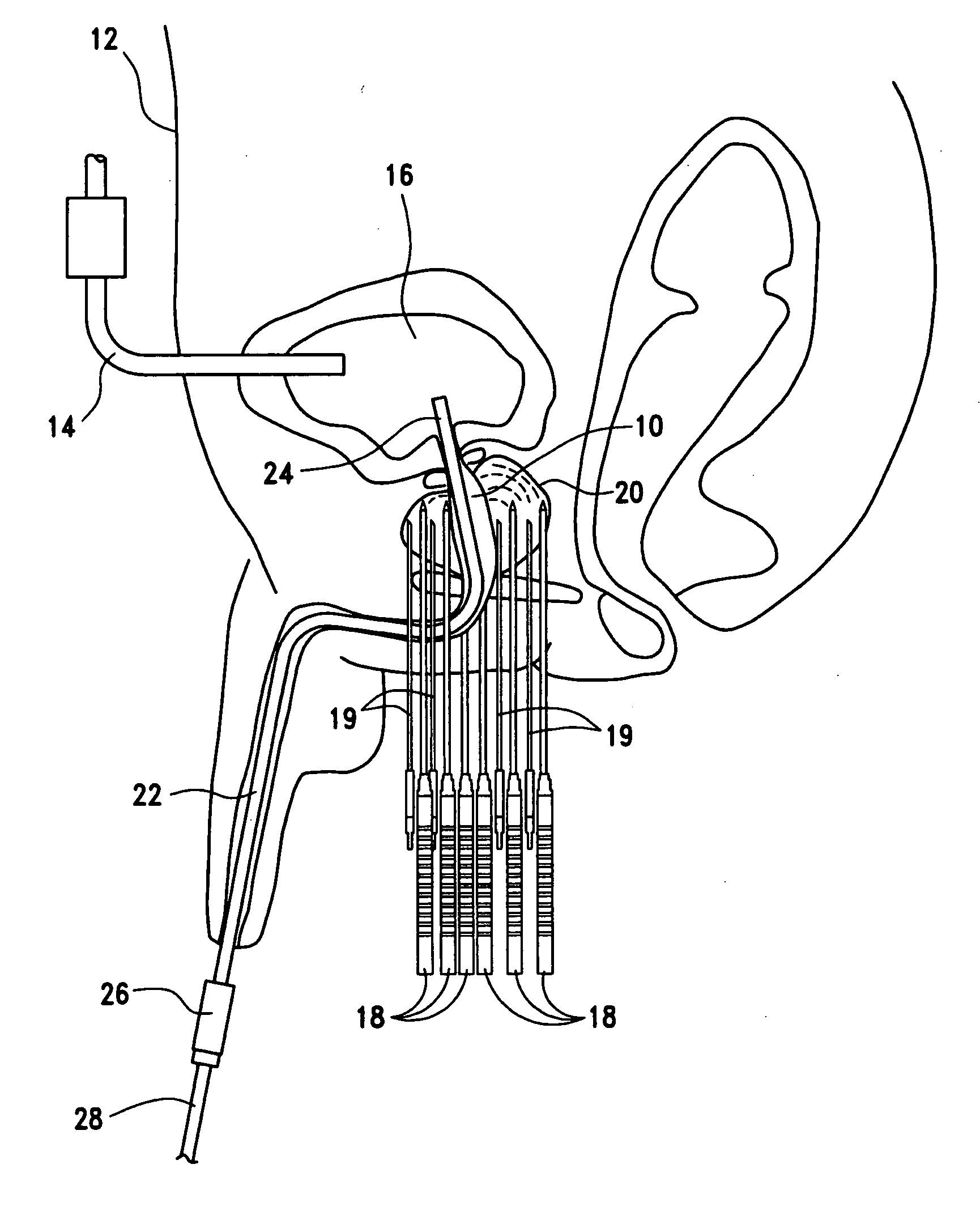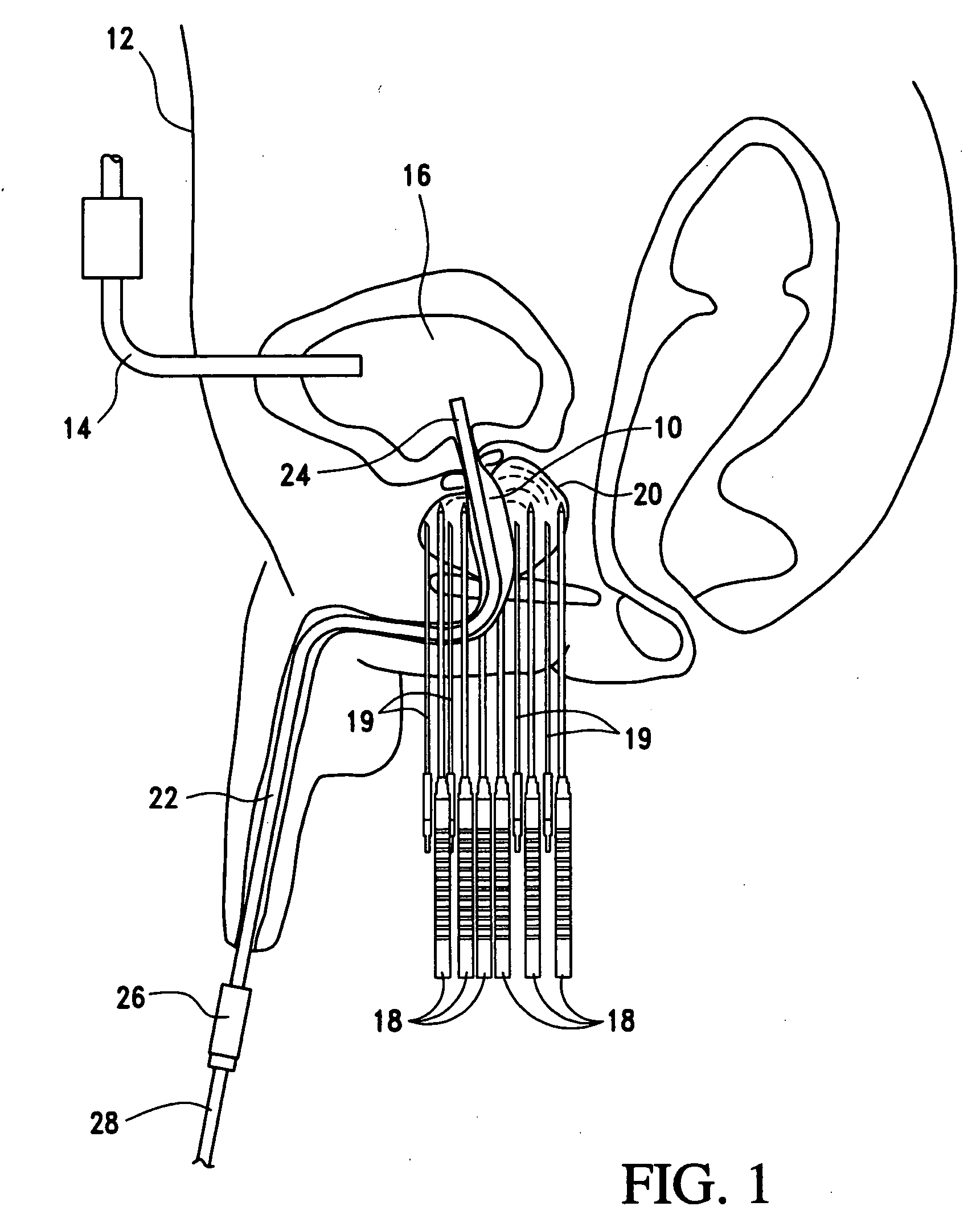Open system heat exchange catheters and methods of use
a heat exchange catheter and open system technology, applied in the field of urological warming and cooling devices, can solve the problems of uneven heating effect, strong thermal gradient in the prostatic urethra, and insufficient warm to protect the external sphincter from freezing
- Summary
- Abstract
- Description
- Claims
- Application Information
AI Technical Summary
Benefits of technology
Problems solved by technology
Method used
Image
Examples
Embodiment Construction
[0021] Referring now to the drawings and the characters of reference marked thereon, FIG. 1 illustrates a first preferred method of warming a urethra 10 of a patient 12 during ablative surgery in accordance with the principles of the present invention. In this method a suprapubic suction tube 14 is inserted into the bladder 16 of the patient 12. Ablative devices 18 are inserted into the prostate region 20 of the patient 12. An injection tube assembly, designated generally as 22, is inserted through the patient's urethra 10 and into the bladder 16. Warming fluid is delivered through the injection tube assembly 22 during operation of the ablative surgical devices 18. The warming fluid is delivered into the bladder 16. The suction tube 14 is operated to expel bladder fluid from the bladder 16 during the delivering of warming fluid through the injection tub assembly 22, the bladder fluid including the warming fluid. The urethra is warmed by the warming fluid to preserve living tissue th...
PUM
 Login to View More
Login to View More Abstract
Description
Claims
Application Information
 Login to View More
Login to View More - R&D
- Intellectual Property
- Life Sciences
- Materials
- Tech Scout
- Unparalleled Data Quality
- Higher Quality Content
- 60% Fewer Hallucinations
Browse by: Latest US Patents, China's latest patents, Technical Efficacy Thesaurus, Application Domain, Technology Topic, Popular Technical Reports.
© 2025 PatSnap. All rights reserved.Legal|Privacy policy|Modern Slavery Act Transparency Statement|Sitemap|About US| Contact US: help@patsnap.com



